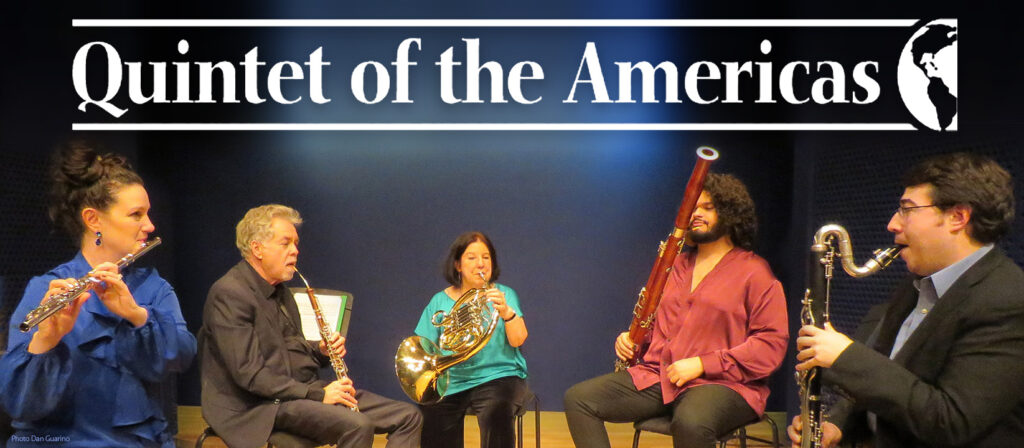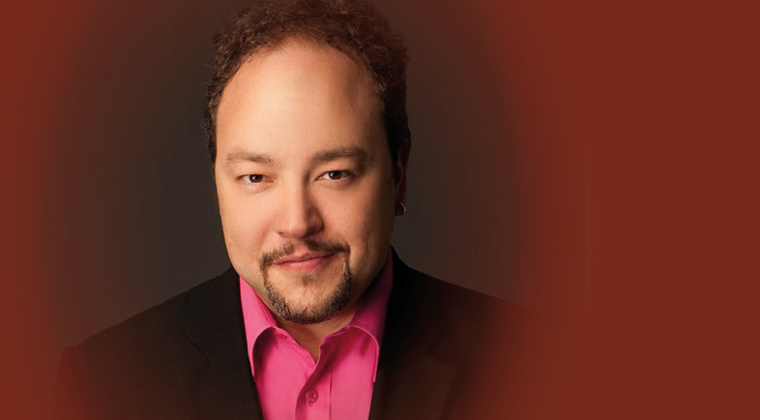Suburban Waltz Fantasy
Rob writes about his Wind Quintet: All of the movements of this wind quintet are connected and inspired in some way by American icons, surrealism, collage, post-1950’s imagery and suburbia. The second movement, “Suburban waltz-fantasy,” contains quotes from 1960’s-70’s TV show themes: The Jetsons, All in the Family, Green Acres, The Dick Van Dyke Show, The Brady Bunch and Leave It To Beaver. The movement begins with a waltz-like feel and two of the players mimicking suburban chicken-lady housewives cackle-gossiping across a backyard fence. An obnoxious stray dog interjects with loud barking and then the movement takes off in a different direction. Some of the quotes are re-composed to sound like bird songs, others are textural and a few are so subtle that they are not easy to discern. Some of the parts even sound like they are mocking each other.
The fourth movement, “Klezmeshugeh,” derives its title from my combining (or melting like shugeh into caramel!) the words “klezmer”‹which is a combination of the two Hebrew words, key and zemer, meaning “instrument of song”, and meshugeh, which is a Yiddish word meaning “crazy”. Essentially, this made-up title means “crazy instrument song”. Like some other musical labels that were originally derogatory in nature, ”jazz” and “baroque” for example, the word “klezmer” used to be a sort of insult, implying a poor folk musician who could barely read music. In this movement, there are a few “wrong notes” that allude to the players pretending to sight-read. Of course, most modern klezmer musicians read very well, so this is more a jab at the past than as an insult pointed at present-day klezmer players! The beginning of this movement is based on the syncopated rhythms of the Bulgar chain dance, which was originally a Bulgarian-style dance from Bessarabia. This dance was hugely popular in New York City during the first half of the twentieth century. I bring back the Dick Van Dyke Show theme in this movement because at the time it aired, it was one of the most Jewish shows ever seen on network TV, at least until Seinfeld. After a brief cadenza, the end of the movement harks back to the beginning, but this time a little more angular and fragmented. The end also concludes with a few thematic fragments from the second movement.
American composer Robert Paterson (b. 1970), was raised in Buffalo, New York. He is the eldest son of two visual artists, a sculptor and a painter. Although he was always in the company of visual artists during his youth, his parents noticed his strong attraction to music, and he was soon taking lessons with members of the Buffalo Philharmonic Orchestra. His first love was percussion, but he almost immediately discovered a passion for composing and wrote his first piece at age thirteen. His works are influenced by music of both the past and present, but he is also highly inspired by visual art, the sounds of machines and natural phenomena.
Mr. Paterson has received performances of his music by many outstanding ensembles, including the New York New Music Ensemble, Chicago Ensemble, Da Capo Chamber Players, California EAR Unit, Cygnus, Ensemble Aleph (Paris), Ensemble Nouvelles Consonances (Belgium), the Society for New Music, the International Trumpet Guild, the Percussive Arts Society in Poland, the 2001 Imagine Festival, the MANCA 2002 Festival presented by the Centre National de Création Musicale (CIRM) and the June in Buffalo New Music Festival.
Mr. Paterson’s awards include two ASCAP Young Composer’s Awards, the Brian M. Israel Prize and 2001 Michigan Music Teachers Association Commissioned Composer of the Year and fellowships from the MacDowell Colony, the Aspen Music Festival, the Hambidge Center for the Creative Arts and Sciences and the Atlantic Center for the Arts.
Paterson holds degrees from the Eastman School of Music (BM), Indiana University (MM), and Cornell University (DMA). Paterson founded American Modern Ensemble (AME) in 2005 and serves as Artistic Director as well as house composer. He is the Artistic Director of the Mostly Modern Festival (MMF) in Saratoga Springs, NY, and the Mostly Modern Festival | The Netherlands. He directs the affiliated record label, American Modern Recordings (AMR). He has given master classes at numerous colleges and universities, most recently at the Curtis Institute of Music, Aspen Music School & Festival, University of Denver, New York University, and the Cleveland Institute of Music.
For more information about Rob visit:
https://robertpaterson.com/home

